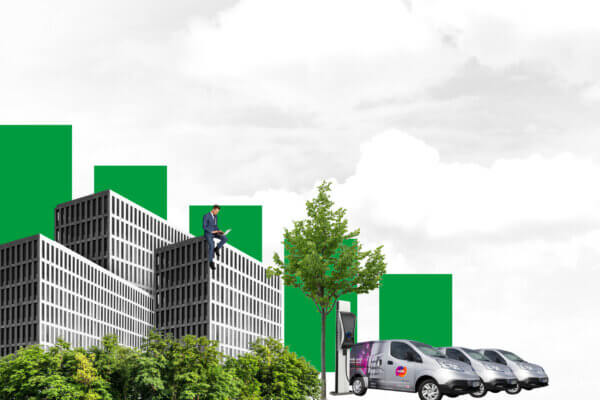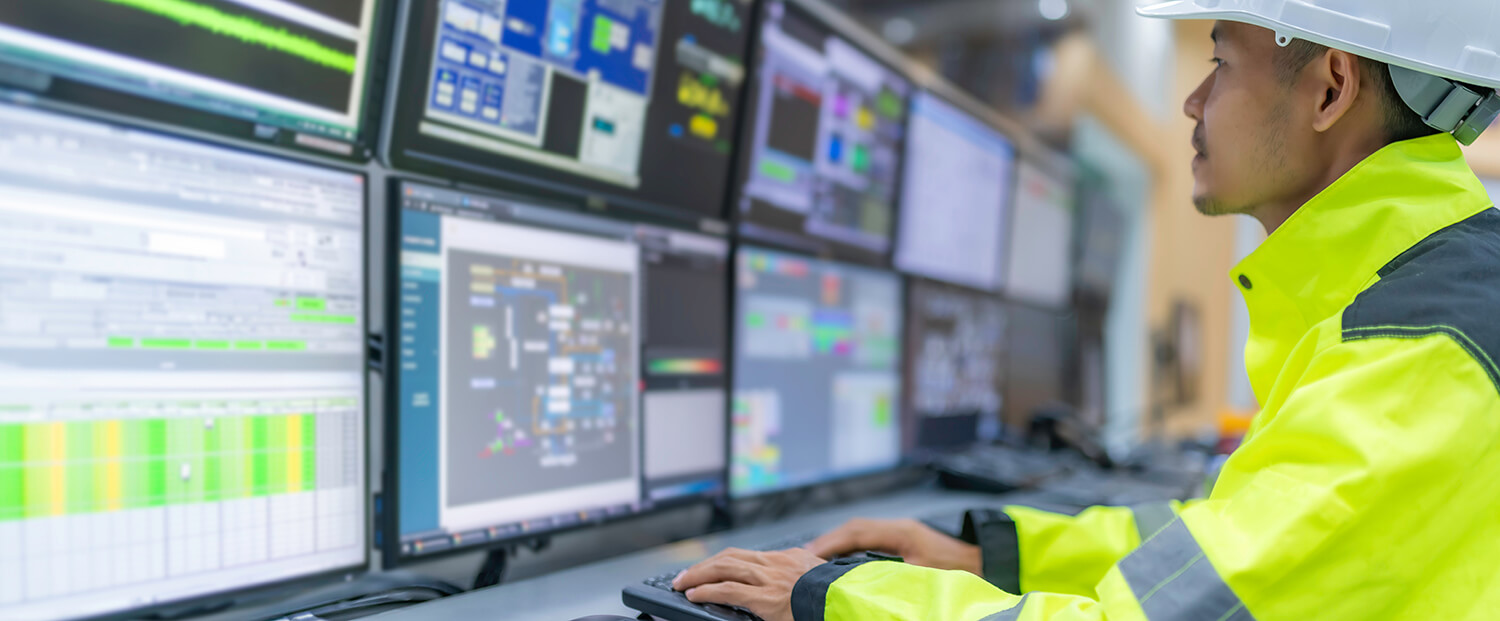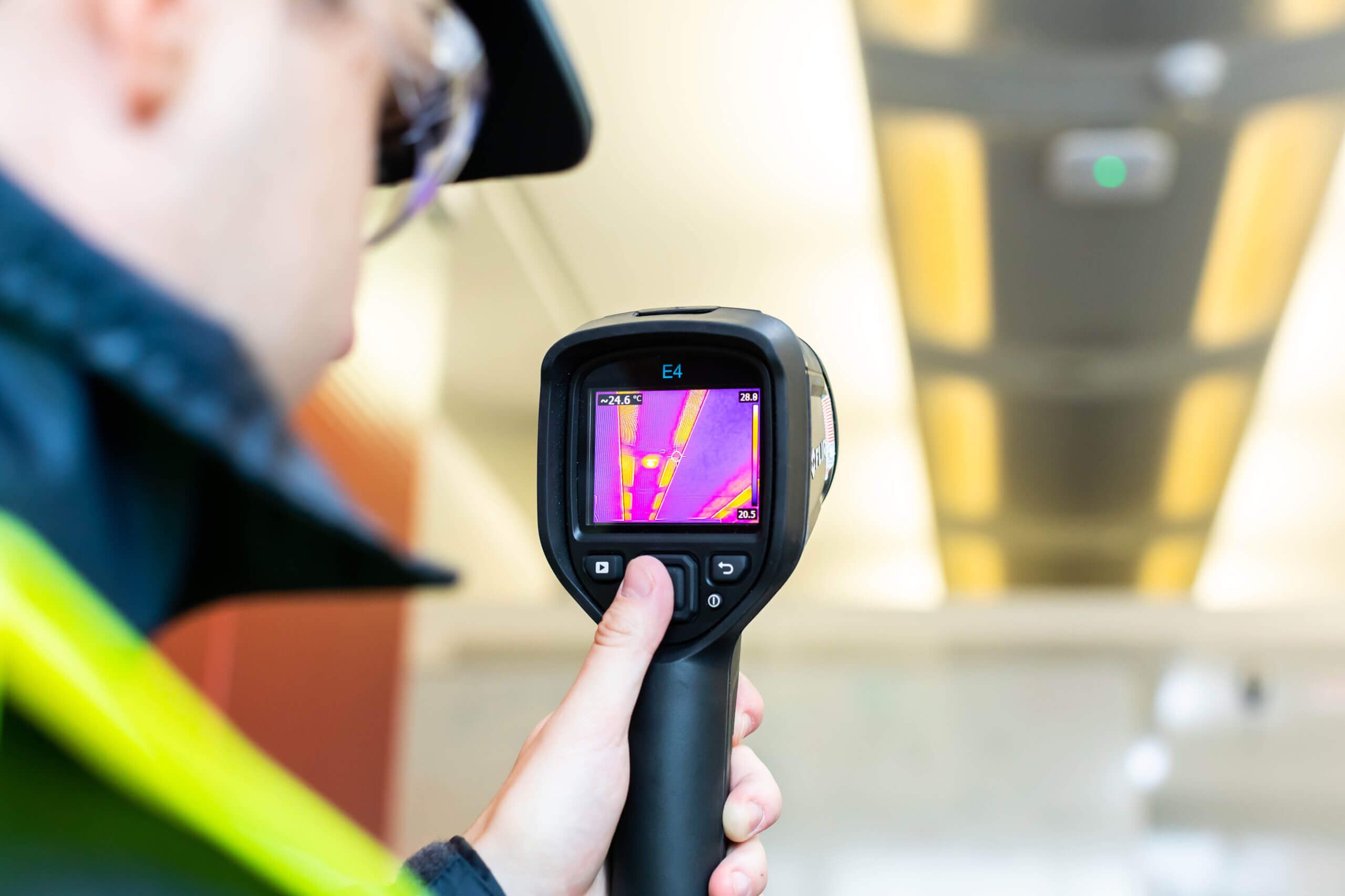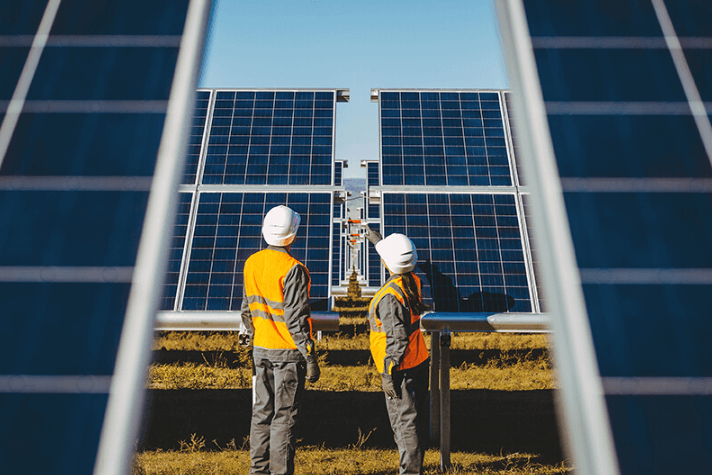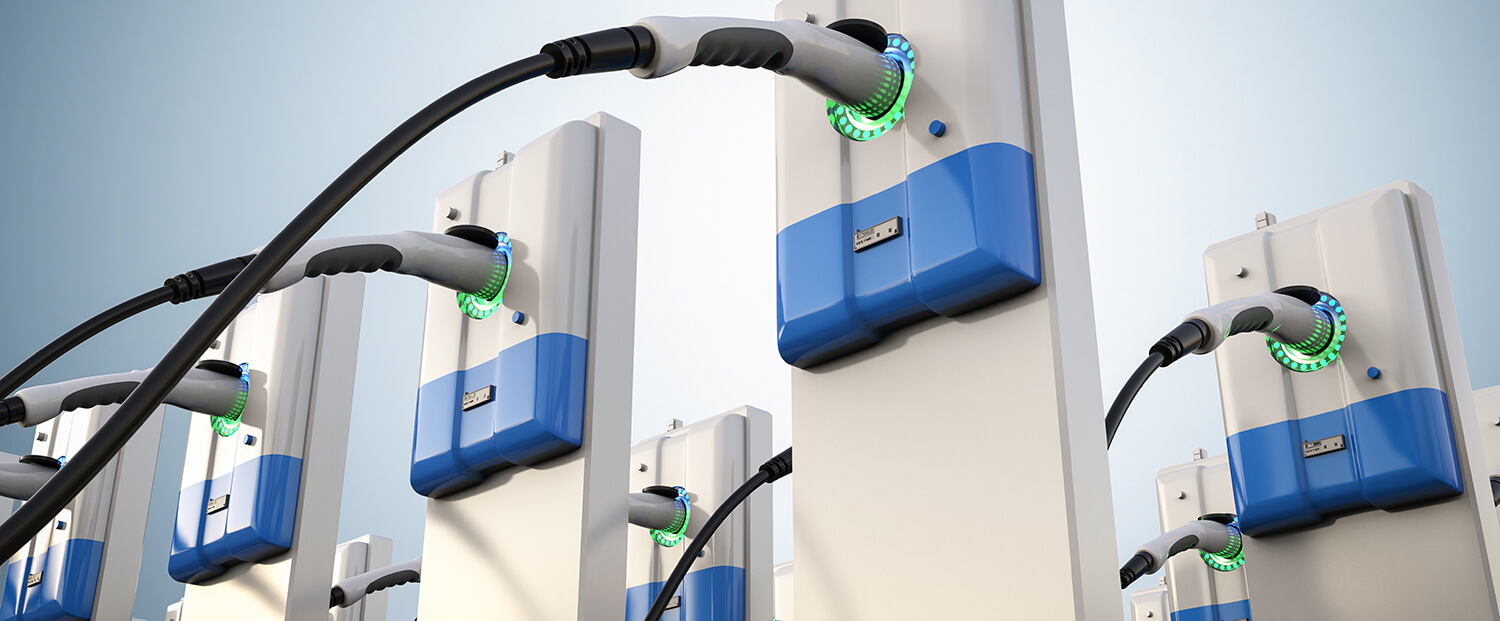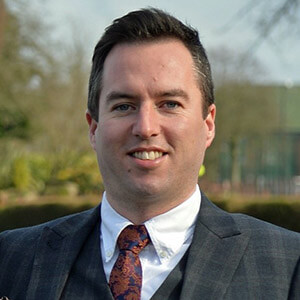Decarbonisation, Delivered
We make decarbonisation of your built environment and fleet simple. With over 30 years of experience and a team of 72,000 experts, our Plan Zero approach helps you reduce your carbon emissions, save costs and secure your energy supply.
Trust Mitie with your corporate decarbonisation solutions, and have confidence in carbon reporting with our new end-to-end solution powered by Salesforce.
- Be inspired
- Our services
- Case Studies
- Get in touch
Corporate Decarbonisation: Be inspired
Let’s turn your ambition into action and get Decarbonisation Delivered.
Mitie’s Science of Service® approach underpins a suite of products and services designed to accelerate your path to net zero. By applying innovation, digital technology, data insight and in-house expertise, we can help you achieve your net zero ambitions with a targeted decarbonisation strategy.
Secure your renewable energy supply
Today’s volatile energy market means you are probably looking for ways to secure your organisation’s future energy needs and to reduce reliance on the grid whilst prioritising sustainability.
With Mitie, you can diversify your energy sources by introducing renewables such as solar PV to your energy mix, protecting your organisation from fluctuations and disruptions.
We’ll also improve your energy efficiency by monitoring consumption and recommending ways to reduce energy needs, delivering major savings in cost and lowering carbon emissions and creating a more stable supply.
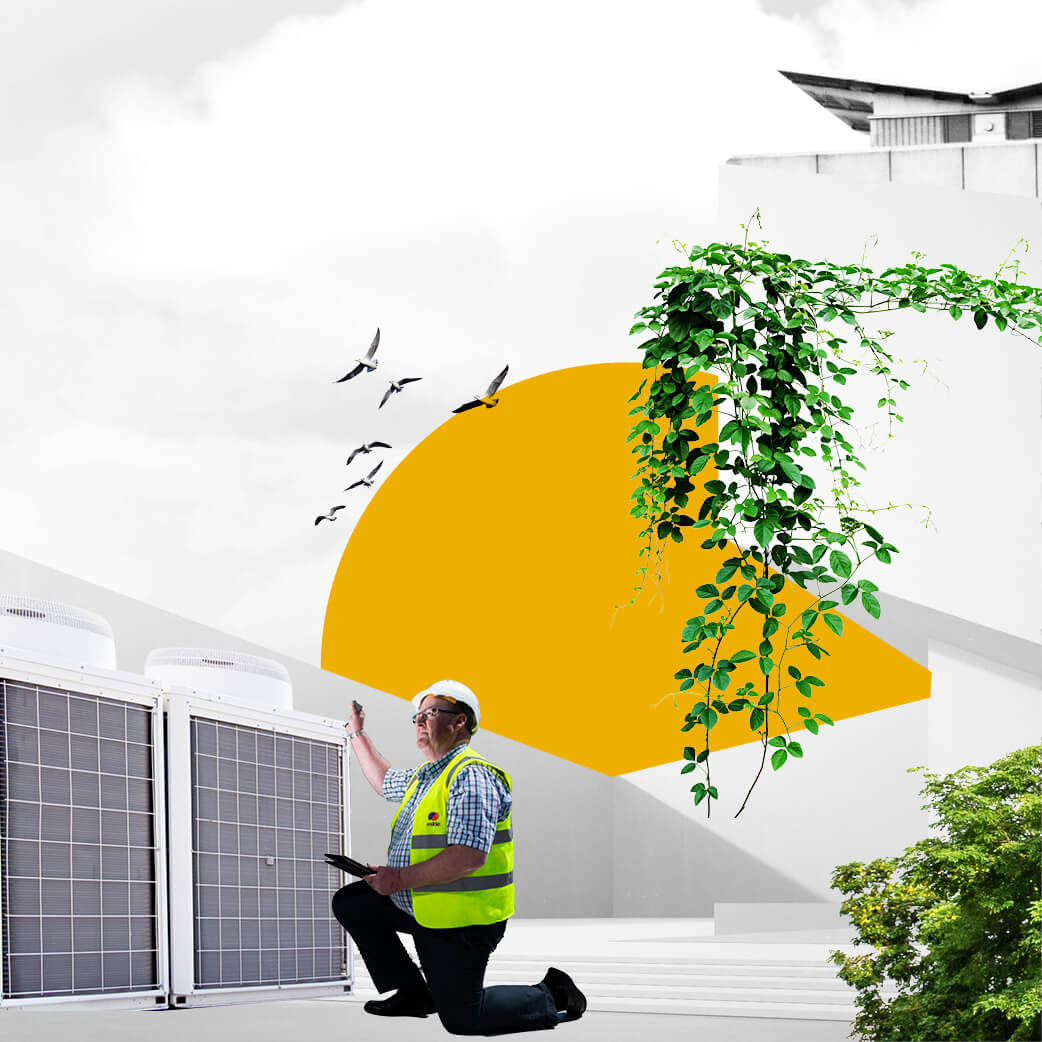
Decarbonise your buildings
With the built environment contributing around 40% of the UK’s total carbon footprint (UK Green Building Council), and increasing legislative pressure to reach net zero, decarbonising buildings should be your organisation’s priority.
Mitie offers renewable heat solutions, modernisation of lighting and BMS to guarantee optimum performance, and efficient HVAC to enhance comfort and aid your decarbonisation strategy.
Working across estates of all shapes and sizes, our in-house experts self-deliver the design, installation and management of sustainable facilities, optimising efficiency and generating energy and cost savings.
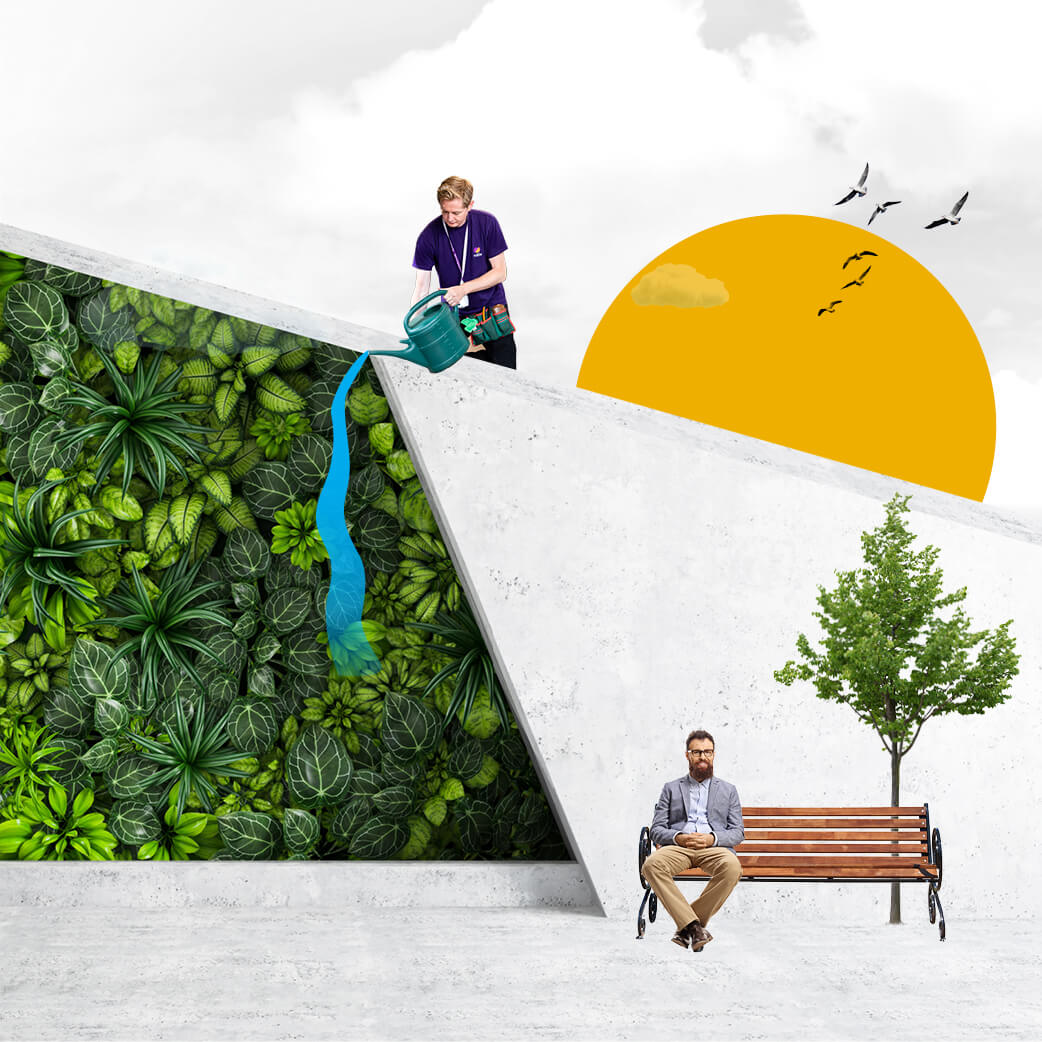
Intelligently decarbonise your fleet
Mitie provides an end-to-end EV solution, acting as a one-stop-shop for EV strategy development with a focus on decarbonisation and net zero. Installation, operation and maintenance of related infrastructure are also covered in our intelligent EV fleet strategy.
With over 5,000 EVs in Mitie’s fleet, and our experience of working with many customers on their EV charging plans, you will be working with a partner who knows how to get a seamless transition to sustainable EV delivered.
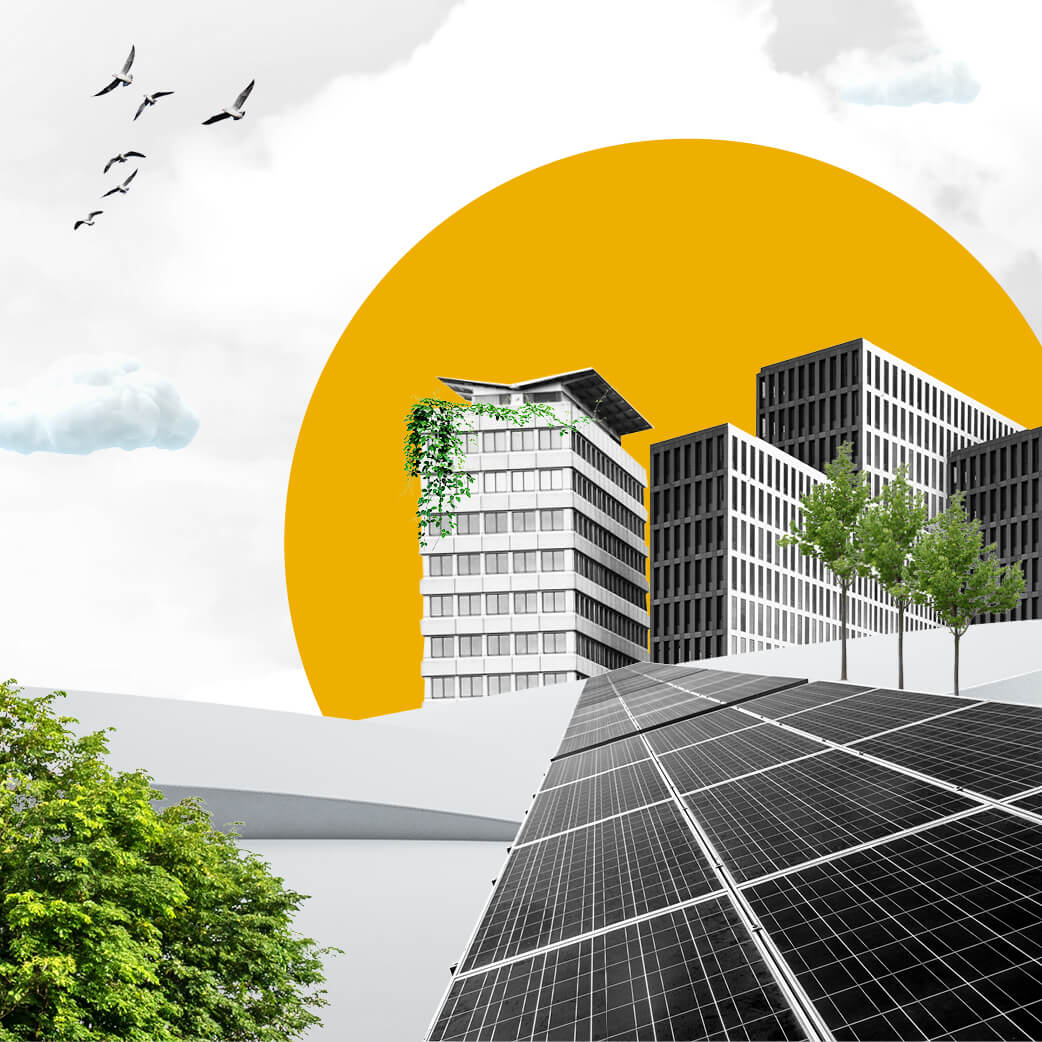
Build a business case for a decarbonisation strategy
35% of organisations we surveyed while researching the Net Zero Navigator 2024 said EV charging costs were their biggest barrier to developing a fully electric fleet.
Mitie helps you make the case for corporate decarbonisation, using insights from experts in transport, carbon reporting, renewable energy, waste, biodiversity and more.
Besides cost and carbon reduction, by investing in a decarbonisation strategy your organisation will benefit from a reputational boost, making it more appealing to investors, customers and colleagues.
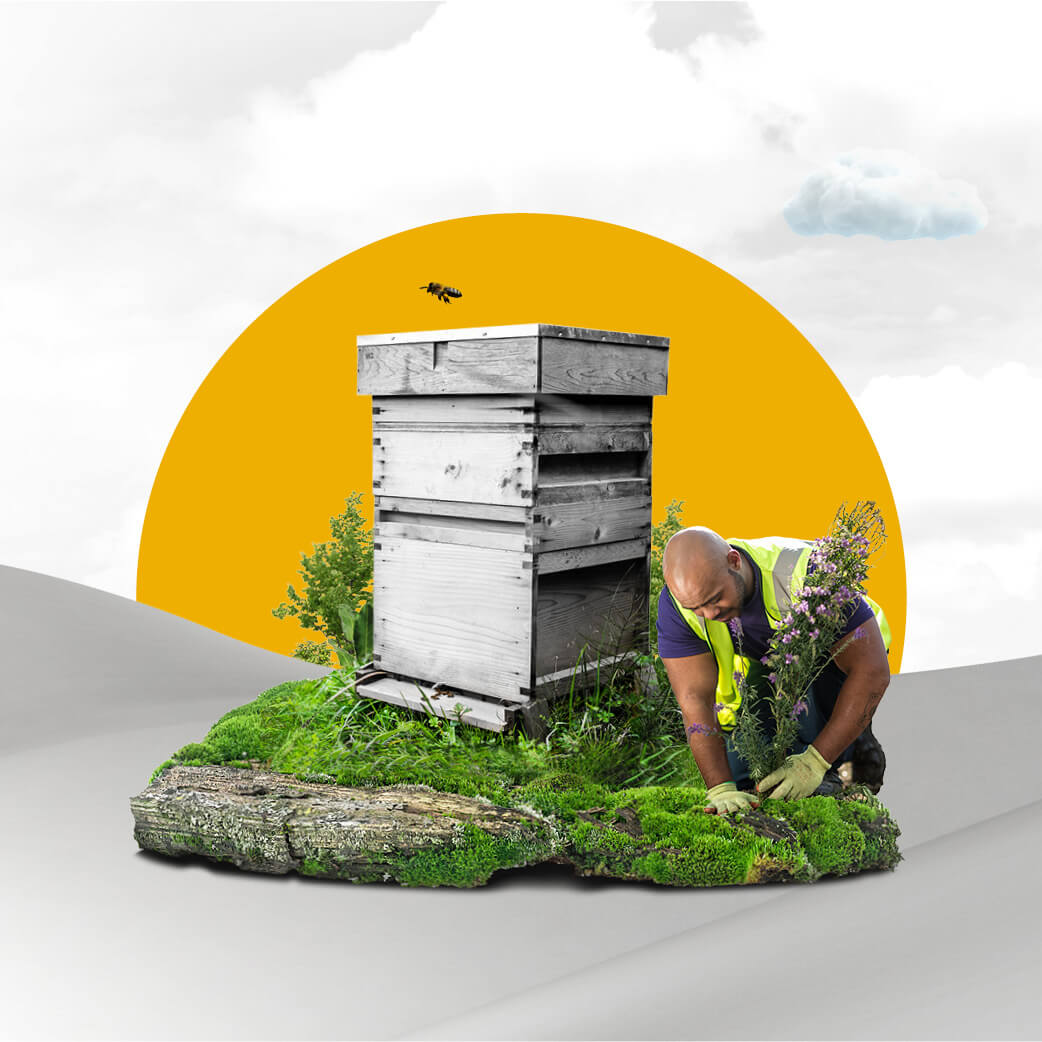
Monitor decarbonisation by measuring your carbon reduction
With increased focus on carbon reporting, there’s a serious risk of financial penalties for failing to meet legal requirements.
Mitie manages your compliance and reporting, ensuring you fulfil all obligations and implement necessary best practice.
Our service is technology-backed, so we’ll analyse the data and create an optimised carbon reduction and reporting strategy.

Ready for net zero?
Read our interactive brochure and take your next steps towards decarbonisation.
Choose a decarbonisation service
2,000
solar panels installed at Associated British Ports, Southampton, reducing carbon emissions by 235 tonnes every year
£4bn+
energy spend managed for some of the largest buyers in the UK
2,600+
EV chargers installed across client sites, colleague homes and Mitie offices
100%
renewable energy used within our business
Our broad decarbonisation portfolio
Driven by a shared ambition to achieve net zero and help combat climate change, our decarbonisation and energy-focused businesses are ready to help you reduce emissions, increase efficiency and secure your energy supply.

Biotecture
Mitie announced the acquisition of Biotecture, a leading specialist in designing, building and maintaining “living walls” for interior and exterior urban landscapes, expanding Mitie’s portfolio of workspace and horticultural services to include vertical landscaping.
Find out more about Biotecture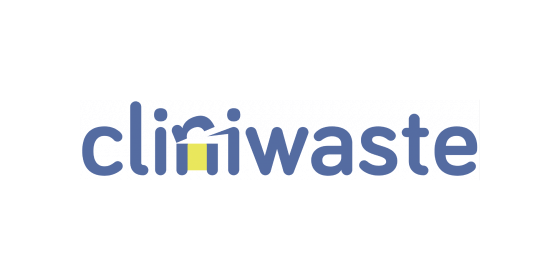
Cliniwaste
Mitie announced the acquisition of Cliniwaste, experts in the specialist treatment of waste in healthcare environments, to complement its existing services for the NHS, helping to achieve its sustainability targets.
Find out more about Cliniwaste
Custom Solar
Mitie announced its intention to acquire Custom Solar Ltd, a specialist solar power solutions company specialising in the development, design, installation and maintenance of solar power systems, strengthening Mitie’s end-to-end green energy solutions offering.
Find out more about Custom Solar
G2 Energy
Mitie announced the expansion of its battery energy storage and electrical engineering capabilities with the addition of the former G2 Energy team, to enhance Mitie’s energy and decarbonisation capabilities.
Find out more about G2 Energy
Rock Power Connections
Mitie announced the acquisition of Rock Power Connections Ltd, a specialist in the design and installation of new high voltage electricity supplies, the renewal of electrical assets up to 132kV and EV charge points, enhancing Mitie’s existing capabilities and ability to address energy TCO for new and existing customers.
Find out more about Rock Power ConnectionsHelping leading organisations decarbonise





Decarbonisation insights

- Insight
- 28 October 2024
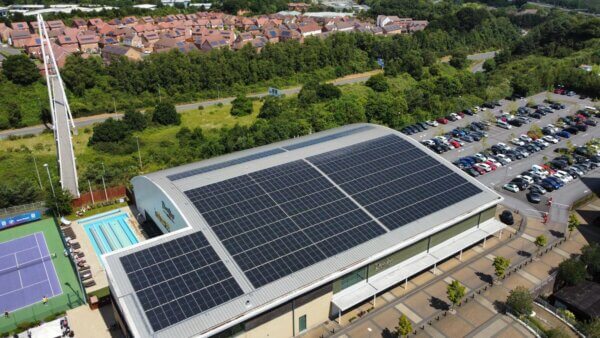
- Case study
- 21 October 2024

- Case study
- 19 July 2024
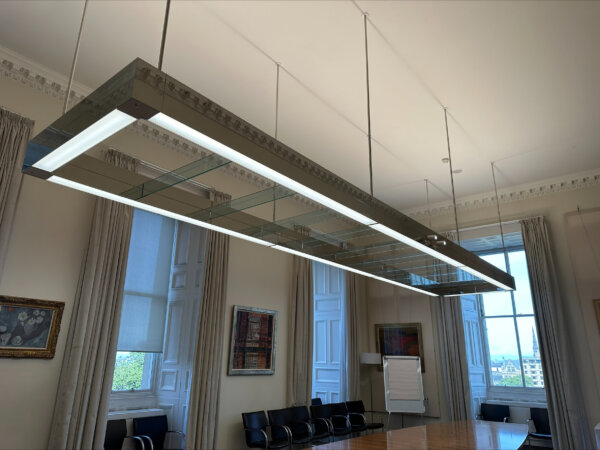
- Case study
- 27 June 2024

S1, E2: The Science of accelerating the path to net zero
With the UK Government’s commitment to reach net zero by 2050, organisations are feeling the strain of decarbonisation targets. But in the challenge lies opportunity. Ian and Chris learn how facilities management is stepping into the breach, delivering sustainable solutions to keep customers on track. Ian ventures to Halifax, where he descends three storeys below ground to see Lloyds Banking Group’s ground source heat pumps in action. And in Chelmsford, Chris learns how the archives at Essex Records Office have been made more sustainable. Across the board, data and technology are playing a decisive role in decarbonisation.
-
 Catherine WheatleyHead of Data, Technology and Analytics, Mitie
Catherine WheatleyHead of Data, Technology and Analytics, Mitie -
 Ben FinlaysonDirector for Property, Investment and Delivery, Essex County Council
Ben FinlaysonDirector for Property, Investment and Delivery, Essex County Council -
 Eleni PolychroniadouCo-Founder, Sintali
Eleni PolychroniadouCo-Founder, Sintali -
 Matteo DeiddaSenior Sustainability Manager, Lloyds Banking Group
Matteo DeiddaSenior Sustainability Manager, Lloyds Banking Group
With the UK Government’s commitment to reach net zero by 2050, organisations are feeling the strain of decarbonisation targets. But in the challenge lies opportunity. Ian and Chris learn how facilities management is stepping into the breach, delivering sustainable solutions to keep customers on track. Ian ventures to Halifax, where he descends three storeys below ground to see Lloyds Banking Group’s ground source heat pumps in action. And in Chelmsford, Chris learns how the archives at Essex Records Office have been made more sustainable. Across the board, data and technology are playing a decisive role in decarbonisation.
-
 Catherine WheatleyHead of Data, Technology and Analytics, Mitie
Catherine WheatleyHead of Data, Technology and Analytics, Mitie -
 Ben FinlaysonDirector for Property, Investment and Delivery, Essex County Council
Ben FinlaysonDirector for Property, Investment and Delivery, Essex County Council -
 Eleni PolychroniadouCo-Founder, Sintali
Eleni PolychroniadouCo-Founder, Sintali -
 Matteo DeiddaSenior Sustainability Manager, Lloyds Banking Group
Matteo DeiddaSenior Sustainability Manager, Lloyds Banking Group
“Ultimately it all comes down to data and understanding all of your assets across your estate.”
Ben Finlayson, Essex County Council
Episode links
Mitie’s Net Zero Navigator 2024
Mitie’s Net Zero Maturity Benchmark
Episode 2: The science of accelerating the path to net zero
Speakers:
- Chris Moriarty
- Ian Ellison
- Catherine Wheatley
- Prad Pandit
- Ben Finlayson
- Matteo Deidda
- Eleni Polychroniadou
Chris Moriarty: Climate change. Described by the United Nations as the crisis of our time, you’d be hard pressed not to see a daily reference to it in the news we watch, listen to, or read. Extreme weather events around the globe and protests in the streets of major cities act as a daily reminder of how critical this topic is. And this is a reason that organisations and governments alike are coming together to map out solutions. But it’s not straightforward. Research has shown that 89 percent of sustainability initiatives fail – an outcome that can’t continue as ambitious targets are set and financial reporting becomes increasingly dominated by sustainability and broader ESG metrics. And to the role of buildings, some estimates state that the built environment accounts for 40 percent of annual global CO2 emissions, with the operation of buildings accounting for 30 percent of global final energy consumption.
In a 2022 report on the status of buildings and the construction in the context of climate, the UN said that in 2021, construction activities rebounded back to pre-pandemic levels in most major economies, alongside more energy intensive use of buildings, as workplaces reopened but hybrid working remained. And in addition, more and more emerging economies are increasing their use of fossil fuel gases in buildings. Often through necessity rather than choice. As a result, buildings’ energy demands increased by around four percent from 2020; the largest increase in the last 10 years, which has meant CO2 emissions from building operations have reached an all-time high.
But the fight back is on.
Organisations are backing up their promises with fundamental changes to their operation in the pursuit of achieving net zero. Armed with the latest technology and a clear desire for action, these organisations are making demonstrable reductions to their carbon footprint. It’s a combination of technology and data, behaviour change, creativity and clear and concise planning. And we get to see how they’re doing it. This is a story of how organisations are taking on the climate emergency.
This is the Science of Service.
Hello and welcome to episode two of the Science of Service Podcast, brought to you by Mitie. I’m Chris Moriarty.
Ian Ellison: And I am Ian Ellison.
Chris Moriarty: And we are the hosts of the Workplace Geeks Podcast, and you join us on a journey of discovery as we take up Mitie CEO Phil Bentley’s invitation to explore the stories of how organisations are using the very latest technology and combining it with human endeavour to make radical changes to their organisations. And today we explore how this relates to the pursuit of net zero.
Ian Ellison: We’ve already heard about the impact of buildings and their operation on the climate, but the reality is that we need buildings. So how do we make sure that we’re limiting their impact, making better use of them and being more efficient with the energy that they consume? So to answer this question on this episode, we’ve spoken to a number of different experts.
Chris Moriarty: Indeed we have. On this episode, we have building sustainability experts.
Eleni Polychroniadou: Talk about climate in business as a good business decision. And it is a good business decision, and there’s a lot of financial reasons why companies need to do something around climate change.
Chris Moriarty: We speak to a high street bank.
Matteo Deidda: I’ve always put lots of focus on the behaviours and really bringing colleagues on the journey.
Chris Moriarty: A UK county council.
Ben Finlayson: But ultimately it all comes down to data and understanding all of your assets across your estate.
Chris Moriarty: And the team leading Mitie’s commitment to carbon net zero.
Prad Pandit: And there is no green premium to pay because you became sustainable. Actually, the sustainable option is the cheaper option.
Chris Moriarty: So, I’d say this is a topic that I have a surface knowledge of. I get that we need to do something. By we, I mean the big we. I do my best to do my bit. But if we’re going to move the needle, it feels like we’re going to have to do so much more.
Ian Ellison: Absolutely. We’re talking systemic change here, and you won’t be alone, Chris, in feeling like the topic can be overwhelming. So, I reckon what we need to get us started is an expert – and one who absolutely knows their stuff, but also explains what we need to be doing in really pragmatic, achievable terms.
Eleni Polychroniadou: So my name is Eleni Polychroniadou. I am the co-founder of a company called Sintali, which is a global environmental verification company, which, if you translate that into what I call human speak, just means that we figure out whether buildings and companies are meeting sustainability credentials, they’re meeting international frameworks, and if they are as green as they say they are.
There’s a lot of greenwashing out there, so we’re trying to be that voice of truth and bring credibility to a lot of work that’s happening around the environment.
I’ve always believed that you can combine business with doing something for climate change because it’s such a systemic issue. I think about how I can use my position in business and my growing network to really change minds and really inspire people to do things about climate change because as one person, I definitely can’t do it all. But if I think about all the people that I’ve met around the globe, all the people working on buildings, all of the owners, all of the developers, the architects. If everybody did something, then we would be in a much better situation.
Ian Ellison: So, you can probably hear already that Eleni speaks both from her heart and her deep-seated conviction to the future of our planet, and also her mind. Not just her knowledge, but also the recognition of community power when it comes to sustainable change.
Eleni Polychroniadou: Talk about climate in business as a good business decision. And it is a good business decision, and there’s a lot of financial reasons why companies need to do something around climate change. But there is also a moral imperative and ethics seem to be, um, a bit pushed to the side when we’re talking about business. And I want to challenge that and say, you know what, it’s good for your business and it’s also the right thing to do and you should be doing it. When it comes to sustainability, there are many different ways of looking at it. I tend to always come back to the triple bottom line, which means people, planet, economy. And the best way that I can describe it is decisions or companies or products – if they are doing something negative into one of those three categories, then they’re not sustainable. So that’s quite a negative framing, but it essentially means that if you have, for example, a business that’s doing something really great economically and really great for, um, service several stakeholders, but it’s really polluting and damaging the environment, it’s not sustainable. But you can also flip that and say, if you have something that’s really green, really sustainable, but it’s creating a company to go bankrupt, that’s also not sustainable. So if you flip it on the positive side, it’s about value creation, about creating positive value for people, for the environment, the nature, the world that we live in, which is where the resources come in from, and then also our economy, because it’s all linked together. And I think historically, we see things as silos.
Ian Ellison: So, we’ve already got two of my pet obsessions here: systems and silos. And what I mean by this is that everything’s connected, but we usually try and solve business problems by acting like they’re not.
Matteo Deidda: My name is Matteo. I work for Lloyds Banking Group, in the sustainability team. I look after anything that is related with the environmental impact of Lloyds Banking Group’s own operation. So, anything that comes from our offices, our branches, our data centre in terms of carbon emissions, energy, water consumption, waste, biodiversity and so on. Anything that you do on those sites, you almost always need to balance the energy efficiency, the sustainability and all this great stuff, with actually the fact that colleagues are working there every day, that colleagues, that the customers are using that space every day.
Ian Ellison: The reason we’re now talking to Matteo is to see how the sort of changes Eleni says are so essential can actually work in practice.
Matteo Deidda: It’s a very diverse portfolio because some of our buildings are hundreds of years old. Others are modern places. Others are very small branches in remote communities. So it’s a very, very diverse type of, uh, type of portfolio.
Ian Ellison: Now this isn’t Matteo’s first rodeo. He’s been in and around sustainability in some form for about a decade now.
Chris Moriarty: So, I bet he’s seen a lot of change in that time.
Matteo Deidda: I think the conversation has evolved a lot over the last 10 years. The conversation was a lot about energy management. We talked a lot about pounds and we talked a lot about kilowatt hour. Fast forward 10 years, the conversation, at least for what I see it, is all about net zero.
Eleni Polychroniadou: One of the reasons that we’re seeing so much action around climate, and seeing companies take it more seriously, is because the financial institutions are driving change. So, if the financial institutions hadn’t said, ‘Hey, we’re not going to finance you if you don’t have certain criteria,’ I don’t think we would be where we are today.
There’s been a huge change in the last two years maybe, of a lot of pressure from regulation on banks, on funds, et cetera to say you need to be funding projects that are driving the net zero transition. You need to be funding only green things. You need to be increasing the portion of green lending that you’re doing, et cetera.
Ian Ellison: So, what we’re saying is that society broadly is motivated to do something, even if, like you said, Chris, sometimes it struggles to know what to do. But organisations are fired up to make change, not only because of that groundswell of motivation, but also because the business system is changing. Drivers are increasingly incentivising this through different mechanisms, like Eleni said there about ESG.
Chris Moriarty: Now I’ve heard about some of these financial instruments that are pushing organisations more and more towards doing more and more. Models like the ESOS scheme.
Catherine Wheatley: So you think about the ESOS scheme, which is basically where every organisation has to look at what’s going on and put forward recommendations for how to make it better, to financial disclosures around carbon impacts. There’s a lot of things that are happening in that space and they’re becoming more and more relevant from both sides, from both the public and internally to the business.
Chris Moriarty: So I popped into Mitie’s HQ in the Shard in London and went searching for someone in the know and I found Catherine.
Catherine Wheatley: I’m Catherine Wheatley, my job title is Head of Data, Technology and Analytics. But what that actually means, is in the Plan Zero space in Mitie, I look after all the data sets that we have and see how we can use them to help our customers, stakeholders, colleagues decarbonise. Lots of Mitie customers are on that journey at different spaces and they might come to us at very at the very beginning of that journey of ‘Look, we’ve got a problem. We need to work out what on earth our carbon footprint is and we need to create a plan and we need to work through that plan to get there.’ Or very often, ‘We’ve done a lot of stuff, how do you help us to get to the next level?’
Essex are a really good example of that in the sense that they have been a customer for a long time and they’ve gone out and thought, ‘Actually, what on earth can we do about our environmental challenges?’
Chris Moriarty: I asked Catherine to introduce me to the team at Essex County Council, so I spoke to Ben.
Ben Finlayson: My name is Ben Finlayson. I’m the Director of Property Investment and Delivery at Essex County Council. So, my role is heavily related to property and construction, but I’m also responsible for the day-to-day operation of the Council’s property estate, as well as a sale, lease and purchase of property. Essex County Council is what we call an upper tier local authority. It has a really diverse, broad role to play in Essex, providing around 80 percent of the services received by the residents in Essex. Clearly to deliver those services, we also need a wide range of assets and also to deliver new construction projects, and that’s kind of where my role feeds into it. We’ve actually got a total of 1,412 assets, and they’re all spread out all the way around Essex. And we have, you know, a huge diversity in terms of size, age, and function of those properties. We have everything from really small libraries to our main County Hall office, which is capable of holding three and a half thousand staff.
Trying to reduce the carbon footprint of buildings, that’s a real challenge because some of our buildings are Victorian and some of them are brand new. We’ve got outdoor education sites, park and rides, we’ve even got a records office and warehouses. So, all of the different types of buildings that you can, you can probably imagine, uh, we’ve got on our portfolio and, you know, targets to try and take those towards a net zero position by 2030. But what we’re having to do is look at our broad range of estate and actually commission all of those surveys to go and actually have a look, see what each building needs to get to that net zero position. We fully appreciate that some buildings that’s going to be really difficult.
So what we’re looking at is rather than necessarily creating net zero for every single building, it’s having that average position. But ultimately it, it all comes down to data and understanding all of your assets across your estate. Uh, the Essex records office is a good example, because that’s actually one where we’ve done a lot of work on transforming it to net zero.
Ian Ellison: Now that record office sounds really interesting. It’s a legacy building, it’s got ancient records, it’s got a closely-managed climate control environment, and they’re power hungry. We’re also thinking about public access into the building. It doesn’t sound like the easiest project from a sustainability team perspective.
Chris Moriarty: Indeed, I thought it was interesting too. So, do you know what I did?
Ian Ellison: Did you go on a road trip?
Chris Moriarty: I went on a road trip. So, I popped down to Chelmsford to meet Ben and have a look around the archives…Hi, how you doing? I’m here to see Ben Finlayson…Chris Moriarty…Hello Ben, how you doing?
Ben Finlayson: This is County Hall.
Chris Moriarty: Yeah.
Ben Finlayson: This is our main office building.
Chris Moriarty: Right, so what should we do then?
Ben Finlayson: So, we’ve got Essex records office, which is a little bit of a walk away. Uh, we’ve got Martin Astell, who is the manager of that site. Who’s going to meet us there at 11:30.
Chris Moriarty: Hello.
Ben Finlayson: Ah, Martin, how are you doing? Good to see you.
Martin Astell: Sorry I’m late.
Chris Moriarty: That’s all right. Martin, I’m Chris. Nice to see you. How you doing?
Martin Astell: The records that we’ve got here are from centuries past. So the oldest document that we’ve got here is from before the Norman Conquest. Most of the collection will be from, you know, the medieval period onwards. So we have to be able to look after things from, you know, from the 14th century up to stuff that’s coming in yesterday.
Chris Moriarty: Right.
Martin Astell: The basic way to look after things, so for all the stuff that we keep on paper and on parchment, if you keep it in the right temperature and humidity conditions, in boxes, protected from light and various other things that can damage it, then you can be fairly confident that it will last for centuries.
Chris Moriarty: Right. Wow.
Martin Astell: So it’s very important to stick within particular temperature and humidity and very important that you maintain them at a steady level. What you want to avoid is fluctuations.
Chris Moriarty: Right.
Martin Astell: So, uh, yeah, kind of a specialist building for, for a special, special reason.
Chris Moriarty: Really cool.
Martin Astell: So, we’re now in the back areas. So this is a restricted area. Members of the public aren’t allowed in here unaccompanied. We’re in, we’re now in the cube, where the records are stored. And there are a number of these repositories, um, where, um, things are kept in, uh, mostly in acid-free boxes. You can see those green boxes down there, our acid-free boxes. This one holds a lot of our map material. So either in these kind of flat chest of drawers.
Chris Moriarty: Yeah. Wow.
Martin Astell: Or rolled or in boxes.
Chris Moriarty: So, we’ve got a sense of how power hungry this building is and rightly so. But we are here to look at how Essex County Council are taking on this challenge using technology and by having the least amount of impact on the environment. So, Ben invited me upstairs.
Ben Finlayson: Obviously, we have all the solar panels on the roof, which we can go up and have a look at.
Chris Moriarty: Oh, yes, please. Do you know, this is my first time in a proper plant room?
Ben Finlayson: There you go. And this is quite a substantial one.
Chris Moriarty: Isn’t it?
Ben Finlayson: So, you can see what these are all generating. 14, 000 watts on that one. 14, 000 on that one, 20, 000 watts.
Pranay Kavathekar: It’s not so much about the sun, it’s just the light, because it’s just the photons and stuff that it activates.
Chris Moriarty: That is the most scientific thing we’ve heard so far. I love that. It’s the photons. I’ll wait till I tell Ian that when I get back.
Chris Moriarty: So that was Pranay, who works for Mitie and has been working really closely with Ben on this project. We’ll come back to Pranay later. But when we came down off the roof, we popped down into reception and had a quick chat and it was there that Ben really explained to me the system that they’ve put together at Essex County Council.
Ben Finlayson: We’ve degassed this site effectively. So there’s no more gas requirement for this site. So, everything we can purchase to, to fuel this site is, is electricity. And you can, you can get electricity from sustainable sources.
Chris Moriarty: Yeah.
Ben Finlayson: We’ve got solar panels on the roof, they’re providing a part of that. The rest, if we buy that from a green source, so wind or other solar. And effectively this is a carbon zero site.
Chris Moriarty: Wicked. And that’s where the, the pump comes in, right? In terms of getting you off, get off gas, do what you can on your site to generate your own electricity. And then, whatever the shortfall is, get it from a sustainable source.
Ian Ellison: Now that’s fascinating, because so much attention is on these new so-called smart buildings when it comes to sustainability technology and so on. So, it’s great to hear how organisations can think about retrofit too. And do you know what? Eleni agrees with this.
Eleni Polychroniadou: I think there’s been a lot of attention on new build, as opposed to retrofit, because it’s a lot easier when you’re starting from scratch to design something that’s better for the environment. What I’m seeing is, there’s a lot of interest in retrofit, a lot of interest in existing buildings, but people are still really hesitating to get involved because of several barriers. One is it’s obviously a lot more expensive to deal with an existing building. You have limitations, you can’t…You don’t want to knock it down because that obviously has a much bigger environmental impact. So then you have the limitations of the size, where it’s facing, certain materials. So you have to be a little bit more creative in what you can do, which again might increase the cost. And then there’s also tends to be issues of ownership. So, where somebody might have a tenant and a landlord relationship, you might be looking at green leases or regular leases, and who has the control to be able to make the changes. There’s quite a lot in the retrofit element. It is a huge segment.
Ian Ellison: So it’s clear that retrofit sustainability improvements can be even more challenging than new buildings. But not impossible. And Matteo has got a cracking example of this at one of their brand headquarters up in West Yorkshire.
Matteo Deidda: We’re just completing our first ground source heat pump in our Halifax building, which is absolutely fascinating. Together with Mitie, we dug two holes, boreholes under the building, which are the same height as the Shard. And under the building there’s lots of water. And we’re using this water to preheat and pre-cool the building throughout the year. I mean, it sounds simple, but it’s been like two years in the making, uh, to, to get to this point. And, I’ll probably say that you, you don’t know until you start drilling, you actually don’t know what you’re going to find there. So, there were days where perhaps Mitie will go through 20 or 30 metres in one go, and others that will go down half a metre because they found a concrete base or whatever.
Ian Ellison: So, Chris, you’re not the only one who’s been out on the road.
Alan Bark: My name’s Alan Bark. From Sheffield. I’m the site manager for Mitie. The main thing that I’m here for is QHSE, so it’s the quality, health and safety, to make sure it’s done. Normally we hand over, we hand the job over that’s fit for purpose and it looks nice.
Ian Ellison: It’s a majestic building. It’s astonishing, isn’t it? It’s like a jaw dropping in the centre of this beautiful old mining town, isn’t it, essentially?
Matteo Deidda: Yeah, it is, it is one of the biggest, biggest buildings in town as well. That’s your borehole, because basically, so, what happened is that this building used to be a brewery.
Ian Ellison: On this site?
Matteo Deidda: On this site. So there is like a water table underneath the building, which is quite, quite prominent. So how this work is pretty much that this water stays the constant temperature throughout the year. So, we’ve got two boreholes. From one borehole we extract, and from the other borehole we re-inject. They are, so what we do is, uh, this temperature stay, let’s say, at 12 degrees during the year. So, during the summer, outside is 30 degrees, we take this water, we use it to kick off the cooling of the building.
Ian Ellison: So in layman’s terms, ground source heat pump technology takes the edges off at both extremes. It gets you up when it’s cold and gets you down when it’s hot.
Matteo Deidda: That’s right. We don’t add or make anything to the water. We just extract the heating from it. But the volume of water is always the same that that just a little bit cooler, a bit a bit warmer. We worked a lot with a hydrologist to understand what was the water table underneath the building before we started.
Alan Bark: The feedback from the Calderdale Council, which I found right interesting. It turns out that Halifax is a unique area with the mountains and the groundwater, it’s got the sandstone, et cetera.
Ian Ellison: Right, right.
Alan Bark: The hospital’s only a mile away down there. The hospital are going to put their own in. They could link them together and put a district heating main in.
Ian Ellison: So, have they been learning from you then? Essentially, you’re a prototype for Calderdale to do this from a public sector perspective?
Alan Bark: And then Calderdale’s going to be the guinea pig for the rest of the country.
Ian Ellison: It’s an art of the possible projects in some ways, isn’t it?
Matteo Deidda: Yeah, and for us, as I said, it’s a massive project. It’s a massive milestone, because one of the things that we have pledged to do is to remove the use of gas from our estate.
Alan Bark: The main reason for doing it originally isn’t about money, it’s about carbon footprint.
Ian Ellison: Yeah.
Alan Bark: That’s the main reason for doing this building. The carbon footprint of this building is horrendous.
Matteo Deidda: 10 percent of all the gas is used in this building.
Ian Ellison: Of the whole LBG estate?
Matteo Deidda: Of the whole LBG estate.
Alan Bark: It’s about making the environment for the people that live in Halifax better.
Ian Ellison: We’ve come down a metal spiral staircase.
Matteo Deidda: So, this building is like an iceberg. The bit that you see outside on the street is as big as the bit that you don’t see.
Ian Ellison: Yeah, it’s like an empire, this building.
Matteo Deidda: It’s like a wooden…
Alan Bark: We’re down in minus three, which is the bottom of the world. There’s, uh, squash courts.
Matteo Deidda: And the first time I came visiting, the squash court was flooded. Which I thought, this is a really good way, indication that the ground source heat pump may work.
Ian Ellison: I wish we were videoing this. This is like a journey to the depths of the unknown. It’s brilliant. It’s like 10,000 leagues under the building. So we’re just coming out of level three now. This is the lowest level?
Alan Bark: Apparently, if you think this is walls, and I tried to joke about it being walls. Seven foot.
Matteo Deidda: These are, these are the heat pumps. So, this one is basically the water. So it’s almost like the water from the boreholes come in here and then we use it from here. On one side of the system, you have the building, and then on the other side of the system, you have the water from the boreholes. So they never really touch, they just exchange heat.
Ian Ellison: So now a massive, automated, galvanised steel, three metre high, gateway is opening. So this is what a plant room properly sounds like. Oh my word, so these are, these are the boilers?
Alan Bark: Yeah, yeah.
Ian Ellison: So these are what, you said 1972?
Alan Bark:1972, that’s what they tell us. They were built locally.
Ian Ellison: Gentlemen, I think that’s amazing. Thank you.
Chris Moriarty: Right, recap time. We’ve established that everyone is keen to make meaningful, positive change. Whether that’s because of a sense of duty, financially motivated or both. And whilst it’s clear that new buildings are perhaps easier to keep sustainable, we’ve just heard about two examples where legacy buildings can be retrofitted. So that’s great. But is it still fair to say that overall progress is slow? If we want to, and can do this, why aren’t we moving faster?
Ian Ellison: Well, I’ve got my own views. We probably all have. But truth be told, I’m not qualified to answer that, but Eleni certainly is.
Eleni Polychroniadou: So, I think the best next step for everyone is to get involved in the green building space. And the way to do that is through accessible information. Historically, there’s always been leaders in the space that are doing incredible things and producing beautiful buildings and the rest of the developers, the owners, the tenants, the landlords have been left behind. And a huge element of that has been communication and access to information. So, I think having that information to be accessible and allowing people to get engaged, is going to be the way that we get more built environment professionals involved.
Chris Moriarty: Now, I hear that, and the importance of communication was something that Ben spoke about at Essex County Council.
Ben Finlayson: There’s a very big piece of work that’s going on in Essex that’s led by our, by our climate team, really, around that communication piece. And, um, the work that the Climate Commission have done with Essex to one, set that ambition, but also then to communicate that and for Essex to be making those kinds of statements around taking its core estate to net zero by 2030.
We do a lot of work with schools as well. And one of the things with schools is you’ve got a really good opportunity to get in there with the kids and the kids then take that message home to their parents. So, when we’re delivering big school projects, we’re trying to really get the kids to understand those projects, why they’re being done. Look at all of these solar panels on the roof. Look at these graphs, guys. This is, this is what, this is what these solar powers are doing. This is how much of your energy it’s now offsetting. And they take that message home to their parents and, and really start sowing the seeds for parents doing, doing similar projects.
Ian Ellison: Yes, indeed. And on this, Matteo also seems to agree.
Matteo Deidda: Throughout my career, I’ve always put lots of focus on the behaviours and really bringing colleagues on the journey. But I think that where we are, certainly on the Lloyd’s journey now, and especially if we talk about energy reduction, then I think the technology side of it is much more powerful than the behaviours. And I’m also mindful that in particular, our colleagues in branches, they are extremely busy. They are really full-on from when the branch opened to when the branch closed, they are full-on with customers. I’ll just say, so I think like behaviours are absolutely essential, but I’m really keen that we sort of don’t overload colleagues with that responsibility when there is still so much that we can do from a technology perspective in many angles.
Chris Moriarty: So that’s the hearts and minds piece, which is critical, but this is the Science of Service. Surely we’ve got to hear about some tech? So, I asked Catherine about her role and it turns out it’s about technology – but as a mechanism to unlock better data and insights.
Catherine Wheatley: Technology generally, you know, has been established for a long, long time. You know, 10, 15 years ago, I was looking at heat pumps. We’re still talking about them today. Solar panels have been around for a long time. Some new things like electric vehicles, which are a lot more recent, but generally in terms of a building space, that’s relatively consistent. In terms of data and information that I can tell you about, that is really, really critical. So data should inform your decisions, but we live in a world where people are really hungry for data and then easily get overwhelmed by it. So therefore, what data I would want if I was a board member, making a decision about – ‘Is our carbon strategy working?’ ‘Is it helping us to achieve our goals?’ ‘Are we on track?’ – is very different to the level of information I would want if I was a building owner, or a budget owner, or in charge of an area or a group of people. I’d say from the data point of view, carbon is now a boardroom issue, but carbon is not necessarily very understood in general public terms, and I think people understand that carbon is bad. But if I said an organisation was using a million tonnes of carbon as its carbon footprint versus 50, is that good or bad?
So it’s trying to put that data in terms that people understand, so they become familiar and they don’t drown in the fact that the carbon intensity or the carbon footprint of a place is something they know what their carbon footprint is, they know at a senior level where they’re trying to get to, wherever that might be, and monitoring their steps along that path.
Chris Moriarty: Now, funnily enough, I experienced this at the archives with Ben and Pranay. Pranay took me to one side to show me a real-time app that was sucking data straight from the solar panels on the roof.
Pranay: All right, so we’ve got schools as well as all the core sites. So when we choose…
Ben Finlayson: That’s the kind of shows you the extent of the solar installed.
Chris Moriarty: Yeah, there’s a lot of sites there.
Pranay: Absolutely. So right now you can see from the general, from the solar PV is like 86 kilowatts coming in and then it goes into the site and then whatever is there’s some excess, is going to the grid as well. So like 6. 9.
Ben Finlayson: We are fully self-sustaining right now. We’re producing more energy than we are using in this building. We’re giving, we’re giving 60 kilowatts back to the grid.
Pranay: So it gives you the breakdown of yearly production, monthly production, so that, that data gets sent across to ECC.
Chris Moriarty: So right now, the sun is powering this building.
Ben Finlayson: And actually this building’s got quite a high demand of energy for its size because of the nature of what we’re doing here. So it’s using 80 kilowatts. Having a picture in one place, where we can make really informed decisions about our assets. What’s providing us with value for money? What isn’t providing us with value for money? Why isn’t it providing us with value for money? All of those kinds of things. And make tweaks and changes as a result of that. So there’s some quite easy quick wins as a result of that just purely around utilisation of energy.
Chris Moriarty: So there’s data for reporting, but what we’re seeing here is data that informs in-the-moment operational decisions. But I can’t help feeling that ultimately money is the issue. Are organisations going to release the purse strings?
Ian Ellison: Well, Matteo is actually quite optimistic about this bit.
Matteo Deidda: If you asked me the same question 10 years ago, I would have said, oh, yeah, the struggle is always getting the funding and convincing the board and trying to get the senior stakeholders and make these to the top five priorities. Now it’s the other way around.
Now, this is probably on the top three priorities. And the question is, how can you do it faster? How can we do more? How can we do it better? So there’s always like this growing and growing, growing expectation, and rightly so, about how will organisations transition into what to this sustainable future.
Prad Pandit: What the Lloyds Banking Group team have done is, you know, if you see their presentations or their business cases, it’s really fascinating. It has very few words. Uh, it has few numbers because it talks about the economic return of the case and a load of pictures. So, demonstrating before / after pictures. Because when you’re engaging senior execs, and asking them for a few million pounds to do something, uh, bringing that to life is quite a challenge itself. And I think sustainability professionals who can communicate that simply will get those approvals for their good business cases, right?
Ian Ellison: Aha, new voice. Who’s this then?
Chris Moriarty: This, Ian, is Prad.
Prad Pandit: I’m Pranyumna Pandit: Prad, the Managing Director for Decarbonisation and Sustainability Services at Mitie.
Chris Moriarty: Now he’s Mitie’s sustainability guru. He actually makes a really interesting point here about the impact of the pandemic on the momentum of change.
Prad Pandit: One of the things the pandemic collapsed was suddenly it was easy to have senior leaders meeting because they don’t need to be in the room together, they will have available on teams. So, the whole pace of business could accelerate.
Chris Moriarty: But he also thinks we can do even more.
Prad Pandit: We have to be bolder about making those business cases. And making people aware that by spending this money, and making it available, you can actually reduce the cost of your operation. And there is no green premium to pay because you became sustainable. Actually, the sustainable option is the cheaper option.
Yes, it requires capital and upfront, but the running costs are actually cheaper. If you don’t have a sustainable building, if you don’t have a plan and you don’t have great actions behind that plan, you’re not a good employer in this war for talent. No one wants to join a company who does that. So there’s a people, your investors are giving your CFO a hard time every time they go for a meeting with them.
So, you know, your HR person is going to support you. Your finance person is going to support you. Everybody is going to support you, but you have to bring that case forward and be bold about it. Let’s take the example of Essex County Council, because that’s an excellent example of how to get ahead of the curve.
So, all these wonderful stories and impact that you see today is a result of starting quite early, where they started small, but strategically. So, it was almost three and a half years back when they started with a day a week of allowing Mitie to partner in a sustainability conversation around how they should look at their energy footprint, carbon footprint and their built estate.
And because they had planned ahead, they knew the projects they wanted. They were able to get quickly in the queue and get some extra funding very early. So one of the early beneficiaries of that programme, uh, and that really kicked it off. And when they saw that success, then, you know, they were always ahead of the curve. They always had their list of projects. They always had their vision for the prioritisation of their projects. And they always went in.
Chris Moriarty: So, I wonder if that means that if we didn’t get an early break, you’re always going to be doomed to catch up?
Ian Ellison: Well, I think you need to be really mindful of the risk of thinking like this, because it can actually give you an excuse to not do anything. And so, another way to think about this, and Eleni also makes the point, is that it’s not all about bold business plans.
Eleni Polychroniadou: There are so many easy wins. There are so many low-hanging fruit that everybody can do, that don’t require tonnes of investment, that don’t require tonnes of time. But if we could all do some basic elements, then that baseline of where the building stock is today would truly increase in a much more meaningful way than if we only have a select group of leaders that are doing incredible things and the rest of us are just waiting for regulation to change.
Chris Moriarty: Right. Now, I think Prad actually said the same thing.
Prad Pandit: One of the things I feel that things are not moving fast enough is because regulation is not strong enough. It’s not like health, safety and environment. It’s not the safety regulations. You can’t go to prison because you did something wrong for the environment. So it’s not punitive enough and it’s not clear enough and it’s not mandated hard.
Chris Moriarty: So there you go, Ian. We’ve covered the why and the how. We’ve talked about winning hearts through communication, and minds through data, and driving change by combining both. We’ve looked at extraordinary projects on unlikely buildings and we’ve been told to be bold.
Now earlier I said that Prad was the Mitie sustainability guru and I do not use that word ‘guru’ lightly. He not only knows his stuff, but I’ve never met someone so positive about what we can achieve, and so able to articulate it in a way that makes you want to stick on a cape and save the world. Listen to this.
Prad Pandit: What is beautiful is sustainable and eternal. We want to ensure eternity, right? Everybody wants to be happy for eternity. If we could, all of us would. So, I think when you build a sustainable business or a sustainable organisation or a sustainable planet, it’s about building something that outlasts the builders, that outlasts everything around, and is harmonious with everything in it.
I dream, or I aspire, would have aspired to be a poet. And, uh, poetry is about economy of words and to use less to make a big impact. The reason we have to be careful is because when we use such words, you get tainted by the stereotypes of tree huggers and soft and all of that. But actually, the hard fact is that sustainability has become a technology challenge.
We really have to remodel the engineering, the technology, the way energy is generated, used, stored, and build in the next 30, 40 years to replace something that’s been built for the last hundred years, right, of electricity.
Ian Ellison: Yeah, but you can still see why people get overwhelmed with this. It feels too huge to comprehend and it’s uncomfortable.
Chris Moriarty: Look Ian, I think whenever we’re faced with a sustainability dilemma, we have to think, what would Prad say? So Prad, this all feels so big and uncomfortable. How do we cope?
Prad Pandit: Every change has a level of discomfort and a slight value of despair before you come on the other side. And I think as there have to be some generations who have to take that transition. Now, we just happen to be born in the generations or we’re growing up or whatever, living our lives in a generation where who is going through this transition.
Ian Ellison: A really good way to think about this challenge is by using a neat little idea called the value action gap. It basically says that when it comes to new sustainability practices, what we say is important – so what we say we actually value – it isn’t reflected in our behaviours or in our actions. And the only way to get past this is to face up to this reality and do something about it. So, in other words, less talk. And more action.
Chris Moriarty: So that brings us to the end of our episode on net zero. And I think it’s only right that we give the final thoughts and the final words to Prad.
Prad Pandit: Seize the moment. You know, this is our time to contribute. It is about protecting our planet for the next generation. It’s our planet and we must do everything we can, with a lot of enthusiasm, and be activist in our actions, actually. No need for pessimism and optimism. Take action and, yeah, protect our planet for future generations.
Chris Moriarty: Wow, I’m off to fetch my cape.
Mitie always goes the extra mile and delivers over and above the day job through its commitments to social value, innovation, digital transformation and sustainability, delivering greater value for money and helping us to achieve our wider strategic outcomes in Everyone’s Essex – a true partnership approach.
Paul Crick, Director for Performance, Investment and Delivery, Essex County Council
Awards & accreditations for sustainability
Mitie’s commitment to sustainability and combating climate change has received widespread recognition. See our list of awards and accreditations below.
Positive Climate Action – Towards Net Zero, IWFM Impact Awards 2024: Awarded to ‘Decarbonising Essex. A step closer to reaching Net Zero Carbon Emissions’, Mitie & ECC
Positive Climate Action, IWFM Impact Awards 2024: Highly commended to ‘BMS Centralisation & Optimisation’, Mitie & DWP
Team Sustainability Award, 2023 Metsa Sustainability Awards
Social Value Impact Award, 2023 Metsa Sustainability Awards
Fleet of the Year, 2023 What Van? Awards
Fleet of the Year, 2023 Fleet News Awards
Transport / Fleet Management Initiative of the Year, 2022 Edie Sustainability Leaders Awards
RoSPA Waste Management and Recycling Industry Sector Award, 2022 Royal Society for the Prevention of Accidents
BALI National Landscape Award – Exterior Living Wall, 2022 British Association of Landscape Industries
Green Apple Award, 2022 Green Organisation, awarded to Mitie Landscapes for Habitat & Diversity, Innovation and Business Refocusing
International Gold Environment Award, 2022, Green Apple Awards by the Green Organisation
Commercial Solar Project of the Year, 2022 Solar and Storage Live Awards
Living Wall Trophy, 2022 Flowers in the City Awards
Zero Waste Award (Four stars), 2022 Zero Waste Awards / letsrecycle.com
Private Sector Fleet of the Year, 2022 Green Fleet Awards
Safe Contractor approved
Contractors’ Health and Safety Assessment Scheme accredited
Disability Confident accreditation
ISO accreditations including 9001, 14001 & 18001
Meet the team helping to deliver decarbonisation
Get Decarbonisation, Delivered
To find out more about what net zero and decarbonisation means for you, and how Mitie can help you get there, please fill in the short form and a member of the team will be in touch.
 Skip to content
Skip to content

